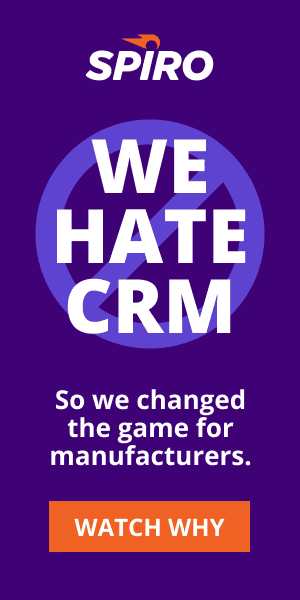5 Things You Should Never Do in Email
Bad emails can stink like a turd in August. Our cofounder, Justin, recently received an email from a sales guy that rubbed him the wrong way. It started out like this:
“I hope you don’t mind me reaching out like this…”
The email fumbled further from there, swung to the edges with pushiness and lame humor, then finally tripped over its own shoelaces with another sad apology.
When he showed it to me it got me thinking about shit you should basically NEVER do in a sales email. (Of course if you use the email templates in Spiro it’s a great way to avoid these issues, too.)
1. Apologize for Your Existence
People who apologize right off the bat and people who generally are always saying sorry about something or other just can’t be trusted in my book.
It seems like you’ve got something to hide. If you’re not the guy or girl shining the light on your product or service, nobody else is. It’s a red flag. Salespeople should be confident – if not, you’re sending a really bad signal.
2. Bro Out
Sales has an intrinsic element of machismo and gorilla-like chest puffing in it that sometimes can’t be avoided. Psychological games are a big part of our biz, but no one likes a bullying jerk. You know what you’ll get when you do that? Ignored at best.
This type of tactic usually is a result of frustration. Can’t get what you want? Pull out the guns. Often I see it when salespeople are trying to nail down a prospect for a date or time. They threaten, they badger, they go over people’s heads. There’s a right way to do it and a wrong way to do it.
[mc4wp_form id=”30369″][/mc4wp_form]
One of the right ways to do it is what I call “the breakup email.” It’s short and sweet and basically says, I guess you don’t want to talk to me, so I’m closing your file and that’s the end of our relationship. It often works because it invokes guilt, but it’s a last resort. Guilting someone is not a basis for a good relationship, especially if you don’t know the person.
3. OMG! 🙂 😉
Salespeople are good at reading people most of the time, whether it be through body language, tone of voice, etc. But how can you read someone through an email?
One of the biggest dangers of email is that your enthusiasm can be misread as immaturity. I see emojis and excessive exclamation points popping up in professional emails more often, and I think it’s risky.
My rule of thumb is one exclamation point per email. Avoid smiley faces except for when you really know the person well.
4. Leave The Other Person Wondering What You Want
For God’s sake, be direct.
Email is not the same as in-person conversation. There are different rules of engagement. For example, it would be weird to walk up to someone you don’t really know and, after one sentence, say, “Let’s set up a meeting next Tuesday to talk about xyz.”
With email, that kind of brevity is pretty much expected. In fact, I think it’s a sign of respect for the other person’s time when you’re succinct and get to the point. No one has time to read through a page or even two paragraphs of backstory.
When I sent a long-ish email to a prospect a while ago he wrote back a response that perfectly nails my point, tl;dr: Too long; didn’t read.
Instead, flip the structure around. Start with “I’d love to find time to get together,” then write two or three lines about why. Try to keep the email below 125 words.
5. Try to Be Eddie Murphy
We love humor at Spiro, but it’s risky. You have no idea how the recipient is going to respond because email is tone-deaf.
Humor is almost always a misdirection at its core. It’s unexpected, which is why some people will like it, and some will hate it. If your recipient hates it in your email, you probably won’t know and you won’t have a chance to recover.
We use humor pretty often at Spiro. One of our most-opened emails had a subject line of “Don’t Go Breaking Our Heart” and a gif from Dawson’s Creek. We tested it a lot and feel comfortable with it because we know our audience well. We also have a comedy writer, so there’s that.
The Takeaway: Treat Email With Care
Salespeople often send out cold emails to people we don’t know at all or don’t know that well. These first impressions can have a big impact, so why take a huge risk?
In my experience it takes about 6-7 emails to get a real response from someone. You have that many other opportunities to add more detail to your emails so don’t pour everything into the first one.
Tone is one of the biggest dangers of emails. Keep things straight forward and you should be fine. Once you develop a rapport with a prospect, then you can test out your latest joke. 🙂
[mc4wp_form id=”32639″]
Photo courtesy of http://www.techly.com.au/emoji/

